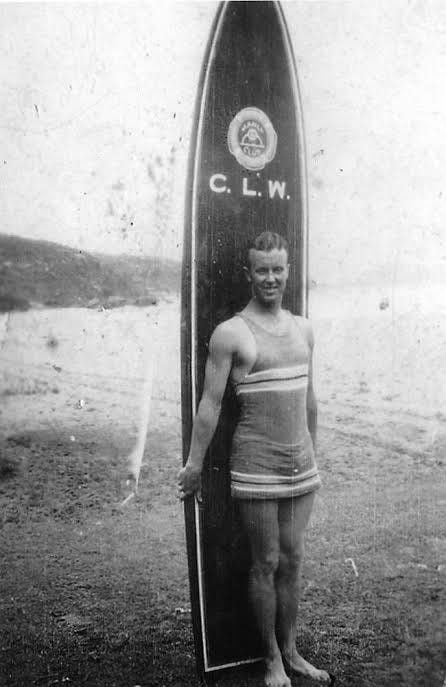Ending the week with a treat – a really great story combining mystery, myth and invention that you can both read and listen to commentary about. Belt and braces. The chapter “L’Inconnue de la Seine” [RR3:40] is reproduced below. The idea for its inclusion was contributed by Amsterdam-based Australian writer Matthew Curlewis. I spoke with Matthew yesterday for the REMORANDOM podcast, and you can watch that episode above. After some reminiscing about 20th century REMO (Matthew worked there briefly) we got talking about L’Inconnue. We also had an interesting chat about the impact of AI on creative writing. Matthew is involved in some cool initiatives for writers. Watch to learn more – and I’ve included some links in this post.
You can also listen to or watch this episode on: YouTube, Spotify or Apple Podcasts
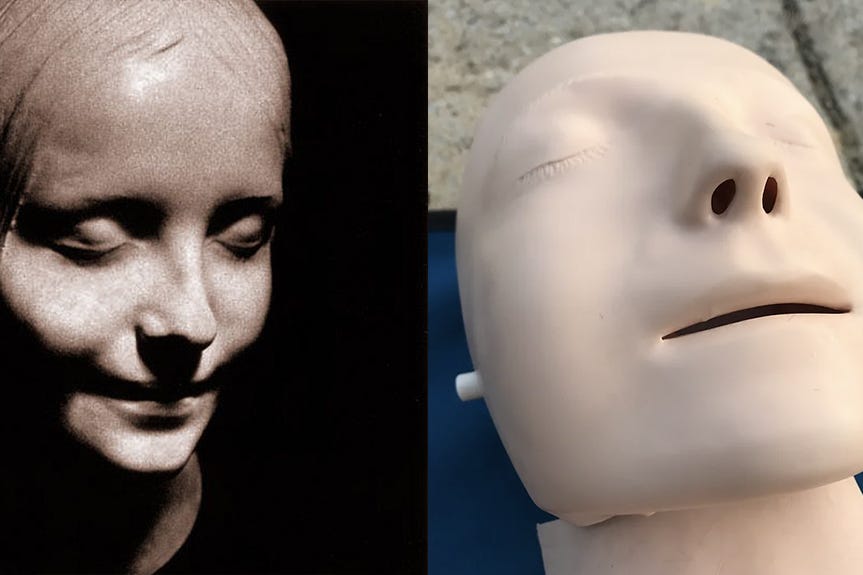
The story of L’Inconnue de la Seine (The Unknown Woman of the Seine) begins in the 1880s. A young woman’s body was pulled from the River Seine – then, in hopes of identification, displayed at the Paris Morgue. But no one claimed her, and her identity remained a mystery.
Entranced by her beauty, the morgue’s pathologist made a plaster cast of this drowned woman’s face, which soon began intriguing others. Numerous copies were made, and the depiction of a serene and enigmatic woman at peace became a morbid furnishing accessory among fashionable Parisians. Before long, facsimiles of L’Inconnue’s alluring, deathly likeness sold in souvenir shops across Paris and the rest of Europe. The mask of this wistful young woman – described by author Albert Camus as the “drowned Mona Lisa” – became a coveted cultural icon hanging in drawing rooms across the continent.
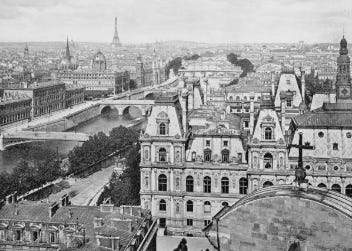

L’Inconnue also turned into a kind of “death meme” for early 20th-century writers, who contrived countless dramatic backstories for this heartbroken heroine. “The facts were so scarce that every writer could project what they wanted on to that smooth face,” museum archivist Hélène Pinet told The Guardian in 2007. As the years passed, L’Inconnue’s notoriety grew. Nabokov wrote about her, a generation of German girls modelled their hair after hers, Man Ray photographed her.
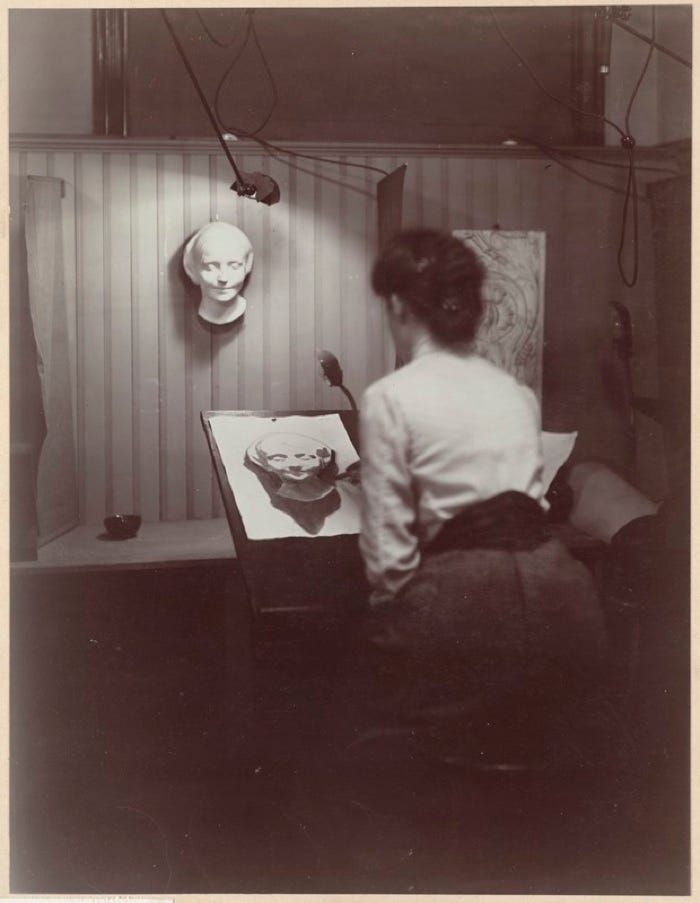
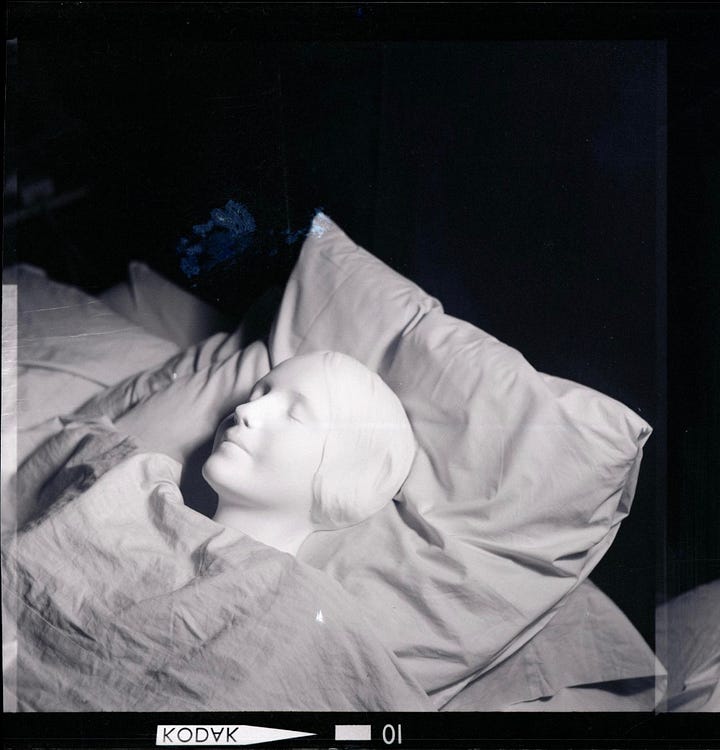
Fast forward to the late 1950s when Bjorn Lind, a Norwegian anaesthesiologist, learned of American physician Dr Peter Safar and his team’s innovations around mouth-to-mouth ventilation and CPR (Cardiopulmonary Resuscitation). Safar’s techniques were proving highly effective, but he’d reached a distribution dilemma. How could as many people as possible, globally, be trained as quickly as possible?
Lind knew of a local doll and toymaker who could help. Not only had Åsmund Lærdal saved his own two-year-old son, Tore, from drowning, he had also learned about medical logistics by creating soft plastic imitation wounds for the Norwegian Civil Defence. The two embarked upon a history-making project: to make a life-sized, life-saving training manikin. Judging that men of their time would be loath to practice mouth-to-mouth ventilation on a male figure, Lærdal decided upon a “female” mannikin. But she couldn’t be too pretty or beautiful, or “corpse-like”. She should wear a tracksuit, to make her appear fit and active. Her name was easy: “Resusci Anne”, based on his hugely popular, soft plastic “Anne” dolls.
But what should her face look like?

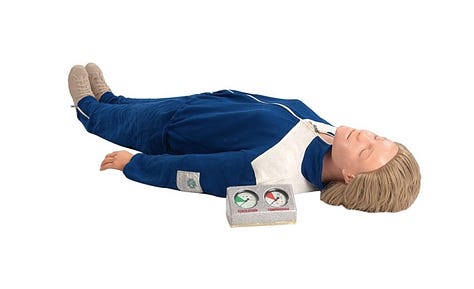
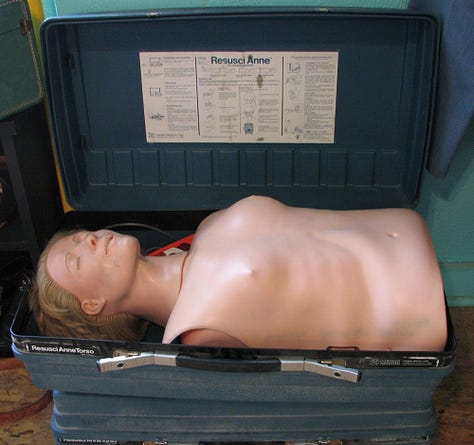
While fretting over this question one night at his parents-in-law, Lærdal “sees” something he’s already seen for years – a L’Inconnue de la Seine mask hanging on their wall. With a few adjustments from Danish sculptor Emma Mathiassen, and the addition of more life-like stitched-in hair, the peaceful face of a drowned Parisian woman from the 1880s, becomes the face of Resusci Anne, the manikin whose face has now been “kissed” over 350 million times, by those learning a CPR technique that has helped save over two million lives.
The face of death has become the face of life.
PS: This story idea, and much of the writing, was contributed by Matthew Curlewis (Bright Side Writings and Amsterdam Writers). Matthew’s grandfather Sir Adrian Curlewis, during his 42-year tenure as President of Surf Life Saving Australia, was pivotal in bringing CPR training to Australia. See below.
Matthew’s Links
WriteOn! November with AWA
Information HERE
Amsterdam Writers
Write first, ask questions later. Link HERE.
Bright Side Writings
Optimism-led stories to brighten these dark times of chaos & collapse. Link HERE.
Artwork
“Guardian” keeps watch behind Matthew, from Australian artist Tom Keukenmeester.
REMORANDOM Book Chapter
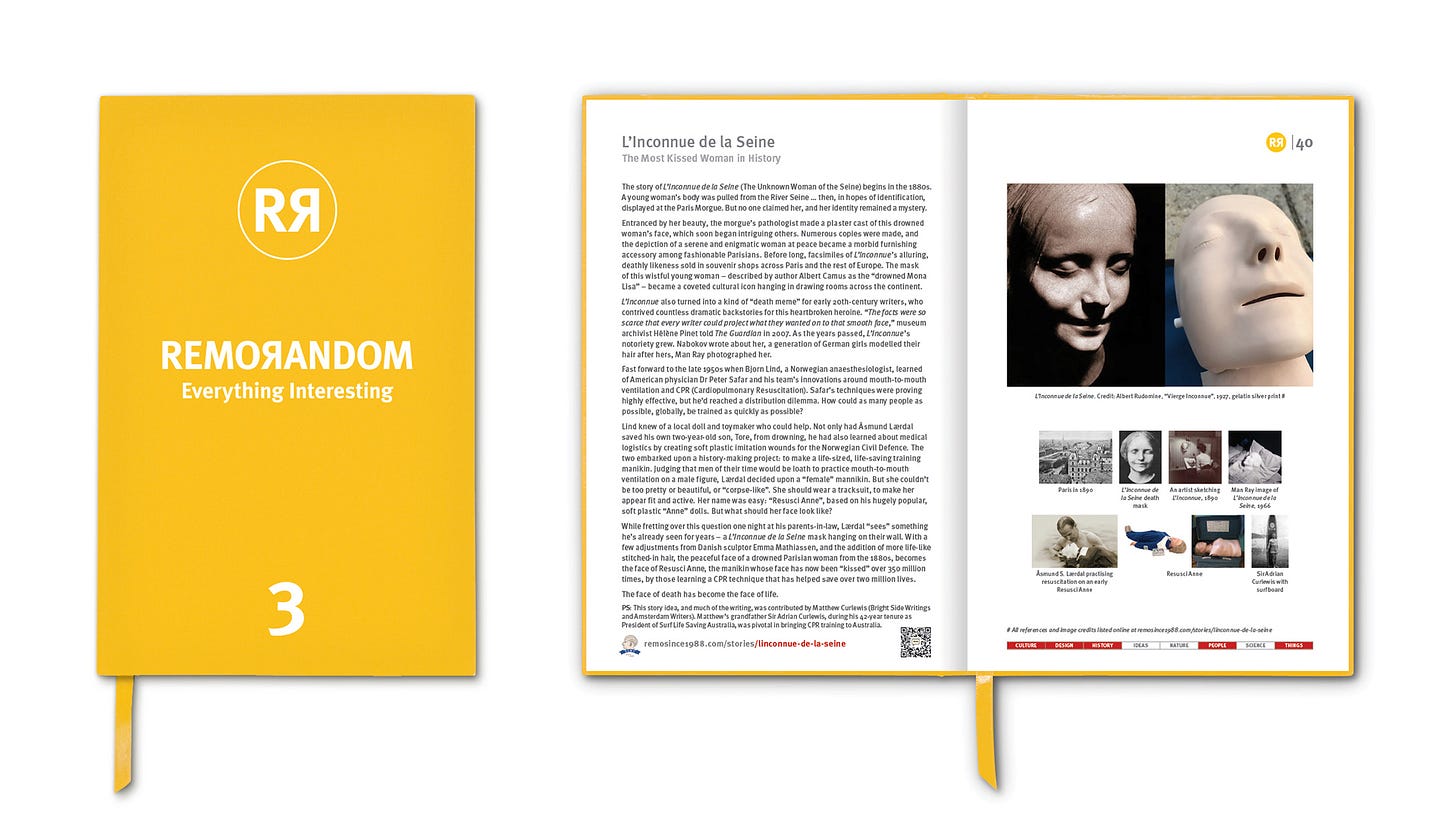
PODCAST CREDITS
REMORANDOM is produced and published in Sydney by REMO Since 1988
Podcast co-hosts: Remo Giuffré and Claudia Chan Shaw
Contact us via email at hello@remorandom.com
Original Theme Music by Tom Thum … using only his voice. Watch his 2013 TEDxSydney talk HERE.
Copyright © EOLO Pty Limited. All rights reserved.



